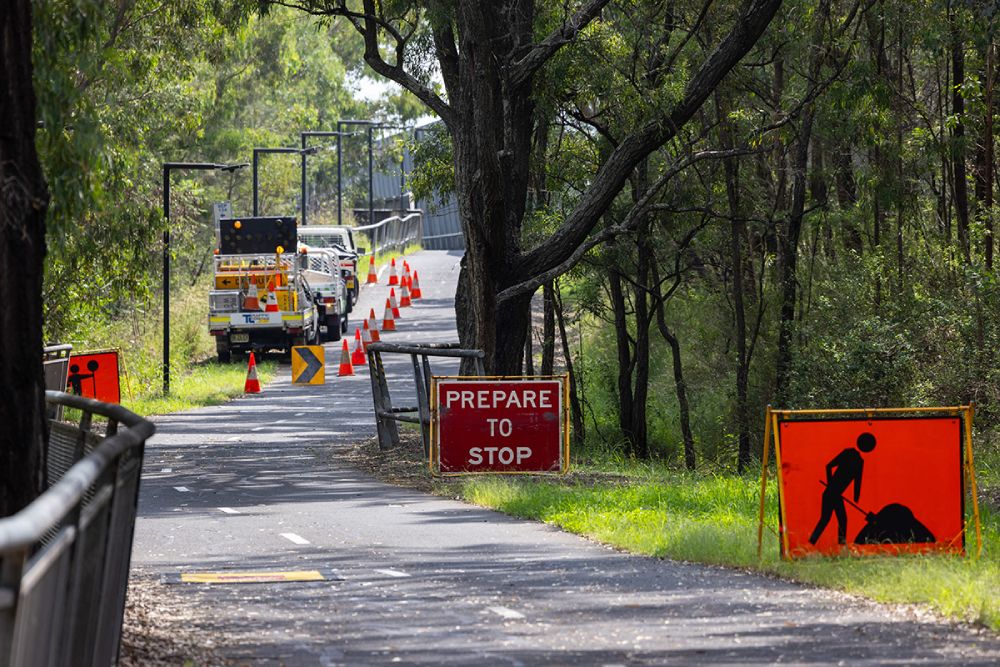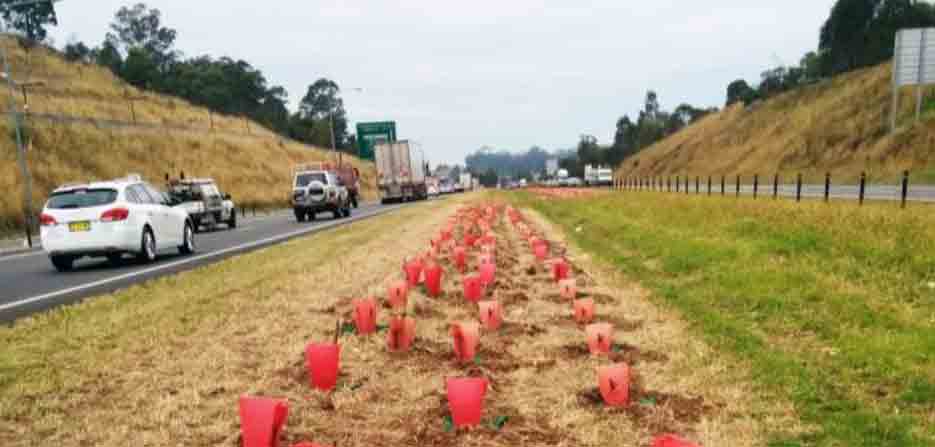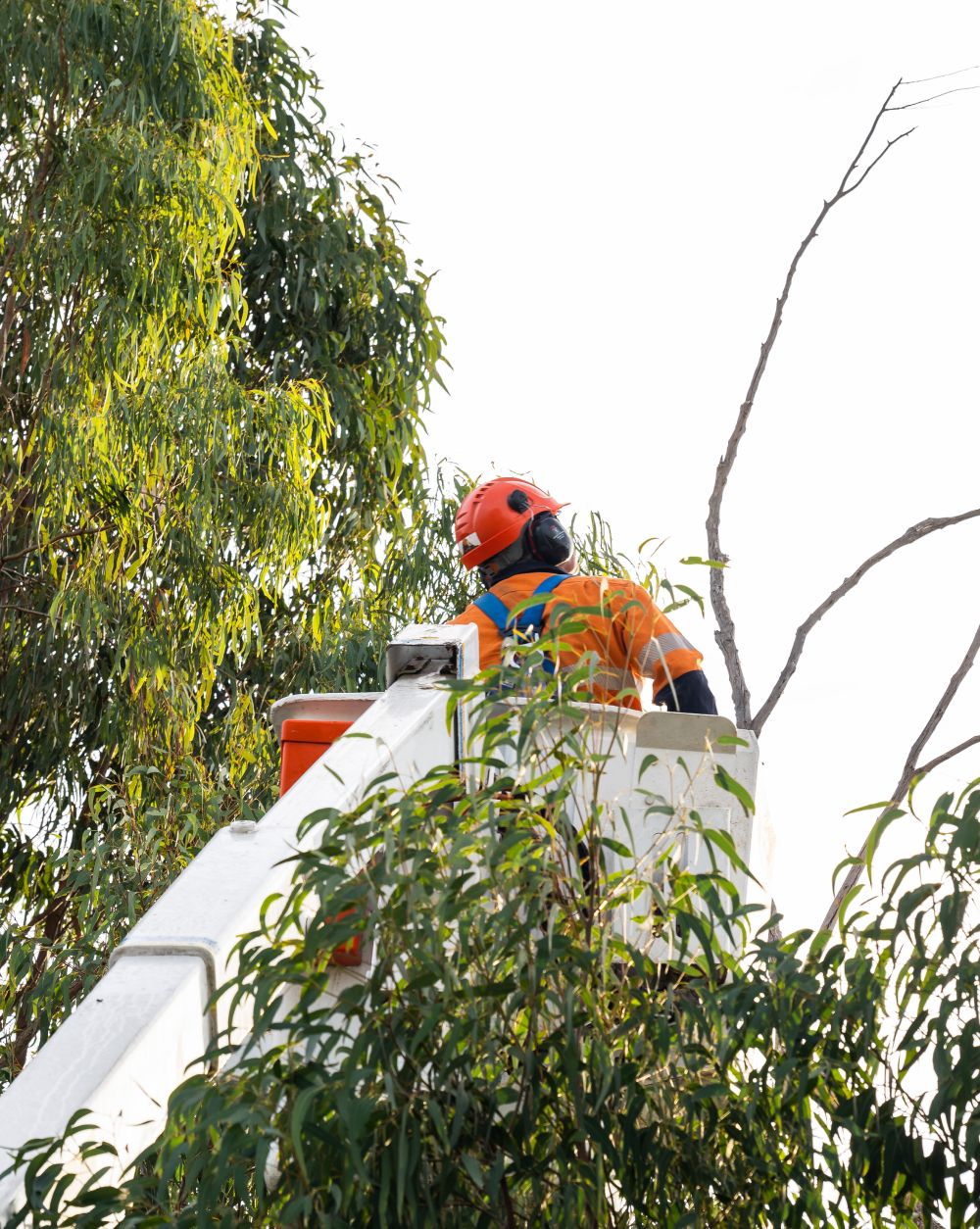Landscape maintenance
Westlink M7 has well-planned landscape maintenance program with a dedicated landscaping and maintenance team routinely working along the motorway, shared path, and residential boundary areas.
Our teams maintain areas in the motorway corridor by:
- cutting grass up to 1.7m from the residential boundaries of the road, shared path, median, and roadside,
- assessing the health of trees,
- checking for noxious weeds,
- removing encroachments and addressing illegal rubbish dumping issues,
- carrying out routine inspections,
- maintaining areas for the safety of our workers and the community and;
- caring for the health of the local environment

Image: tree works and safety controls on the M7 shared path
Looking after trees in the M7 corridor
Westlink M7’s environmental and maintenance teams monitor the health of trees in the M7 corridor. We follow and adhere to all relevant legislation and regulations in relation to tree preservation and maintenance.
Residents can help to maintain the biodiversity of the bushland areas in the M7 corridor by:
- Planting regionally native species in your garden
- Keeping out of designated environmentally sensitive areas which are there to protect endangered vegetation and wildlife
- Preventing damage or removal of vegetation
- Responsibly disposing of household, building, animal, or garden waste in council bins or authorised dumping facilities to keep the local bushland environment, and our maintenance workers, healthy and safe.
Living next to bushland and trees
Property owners living next to bushland and trees in open areas may need to consider their own additional property maintenance measures for tending to the dropping of leaves, flowers, fruit, branches, or deadwood from neighbouring trees and vegetation.
While Westlink M7 is unable to assist with property maintenance issues we encourage neighbouring residents to report any changes to tree health by contacting the M7 Motorway.
To know more, view or download our Trees Fact Sheet
Weed Control Program

Westlink M7 maintenance teams use Roundup Biactive, a glyphosate-based pesticide chemical, as part of our routine weed-control program. Starting annually in summer, the shared path, motorway median, shoulders, ramps, and community boundary areas are sprayed every 2 months, weather permitting.
Westlink M7 displays signage on vehicles at work areas. We aim to keep shared path users and the local community informed about our maintenance and weed spraying activity through email alerts. Opt in to our email alerts, you can opt out at any time.
Contact us

Report landscape and general maintenance
Westlink M7 crews respond to a range of landscape and general maintenance activity to protect the health of the local environment. If you see something that needs our attention, let us know by contacting the M7 Motorway and we’ll get right on it.
Landscape & Maintenance Fact Sheet
To know more, view or download our Fact Sheet - Lanscaping
Image: worker carrying out tree maintenance works in the M7 corridor

